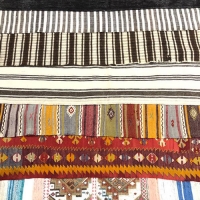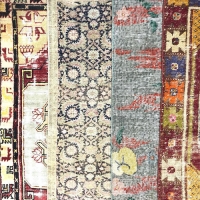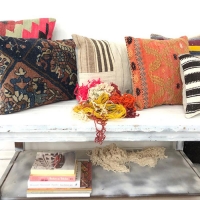
Rug Techniques
The rug is a weave that is completely hidden by weft yarns and made into a double yarn system. The lint-free weaving, which is a lint-free weaving based on two yarn systems, is the non-woven and knotless weave. In this context, it is quite natural that there are various differences between rugs and carpets.
When the date of the rug and the carpets were compared, the carpet appeared later than the rug. Rug is used as an indispensable building material in tents urbanization. In addition, its lightness, ease of folding, its presence in the house and its appearance as a soft mosaic on the ground have pushed the rug to more intensive use. Rugs still have great convenience in terms of use. It is seen that sometimes it is used sometimes as ornament.
Rugs; curved weft rugs, rugs formed by the compression of additional wefts between normal wefts, rugs produced by the destruction of the marrows with double clamping, rugs with weft return from the same warp, ruffled contoured rugs, curved weft contoured rugs are divided into groups as technical. As you can see, rugs have quite a lot of production techniques.
Buttonholes are called holes which are left on rugs during weaving. The weakest rugs have a large number of marrows. In this sense, it is possible to say that quality rugs have no buttonholes. Today, very high quality rugs continue to meet the needs of people.
It is possible to see the production of carpets and rugs in factory and factory conditions for a long time. Motifs and colors are determined by orders received by the manufacturers. Thus, the desired shape and quality have a rug.
It is possible to subject the hand weaving rugs production stages to various classifications as raw material, drawing, twisting, dyeing, weaving and washing. The material used in making rugs is wool. It is used for making wool rugs for reasons such as flexible and long lasting, easy to make the spinning and weaving processes and to keep the dye.
Soft or semi-rigid multi-layered yarns are woolen rope yarn. In the rug, the wool yarns must be twisted 6 times with wires not less than 3.



